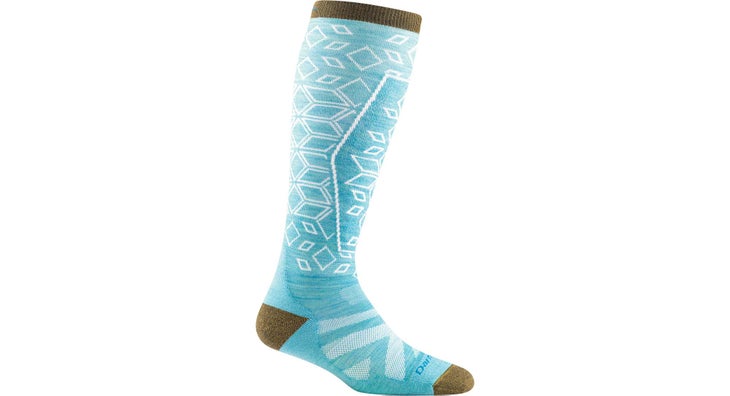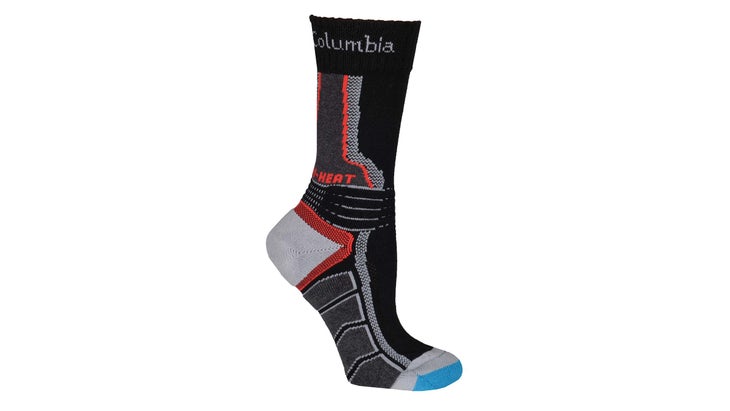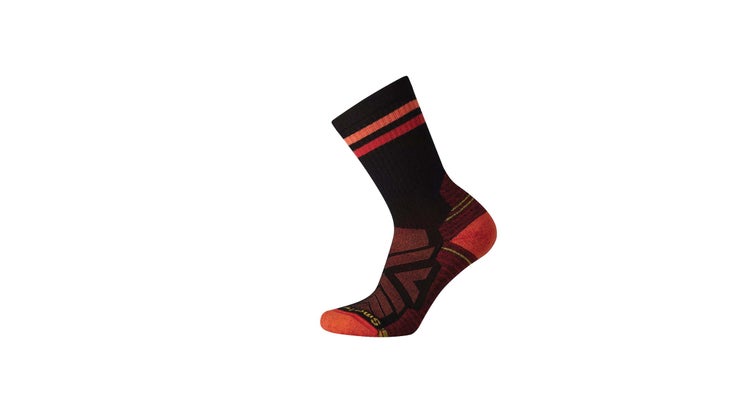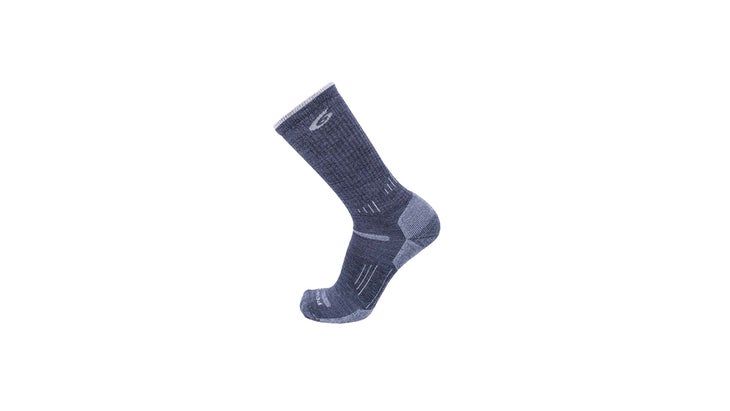Heading out the door? Read this article on the new Outside+ app available now on iOS devices for members! Download the app.

Best for Ski Touring: Darn Tough Backwoods/Traverse
- Price: $29
- Weight: 3.9 oz. (m’s L)
- Sizes: m’s M-XL, w’s S-L
- Buy Now
Touring in the backcountry is a sweaty, sometimes uncomfortable endeavor. This lightly cushioned sock helps ease the task: The Backwoods (the Traverse is the women’s version) helped fend off discomfort on long days, thanks to 52 percent merino content and supportive knitting. A healthy amount of spandex (6 percent; the rest is nylon) in the arch and padding in the shin kept our feet secure and protected. The thinner areas of the sock helped it breathe enough to keep testers from sweating out, even while they climbed. “It maintained warmth, resulted in no hot spots, and never required any adjustments,” says one tester who wore the Backwoods in temps ranging from -8°F to 28°F for avalanche education classes and backcountry adventures across Colorado’s Front Range. “The sock was never too hot at the upper end of the temp range, and I experienced very little sweat,” he added.

Warmest: Columbia Omni-Heat Hiking Crew
- Price: $28
- Weight: 2.4 oz. (M)
- Sizes: unisex S-L
- Buy Now
Heading into the deep freeze, but don’t want to deal with the bulk and lack of breathability of an expedition-weight sock? The midweight Omni-Heat has you covered. It punches well above its weight for both warmth and breathability, making it an ideal choice for hiking hard on the coldest winter days. Credit metallic dots that rest on top of the foot, which help reflect heat. That, coupled with the OmniHeat’s melange of fibers—38 percent merino, 27 percent nylon, 30 percent polyester, 3 percent acrylic, and 2 percent spandex—results in a sock that kept one tester happy and sweat-free while he trekked in temperatures that swung from 5°F to 63°F in the Canadian Rockies. “I usually run cold, but my toes never got chilly in these socks,” he says. Plus, he adds, the ribbing on the sides allowed the sock to conform to his feet with no slippage.

Most Comfortable: Smartwool Performance Hike Light Cushion
- Price: $23
- Weight: 2.5 oz. (m’s M)
- Sizes: m’s M-XL, w’s S-L, unisex S-L
- Buy Now
Mountaineering boots often lean towards stiff and uncomfortable. By wearing this sock during break-in periods, however, we were able to mitigate irritation. One tester put 75 miles and 21,000 feet of elevation on the Performance Hike Light Cushion, and emerged from his adventures without a single hot spot. “While wearing a mountaineering boot for 14 miles in Washington’s Olympic National Forest, I fully expected to find blisters on my heels. But the sock resisted any bagging out, and provided padding in all the right places,” he says. Credit the minimalist-yet-effective cushioning, which includes extended padding up the Achilles, as well as mesh on top of the foot that enhances breathability. The Performance Hike Light Cushion is made from 56 percent merino wool that lies next to the skin for temp regulation, as well 42 percent nylon on the outside for durability and 2 percent elastane for stretch.

Most Versatile: Point 6 37.5 Hiking Essential Light Crew
- Price: $25
- Weight: 2.5 oz. (M)
- Sizes: unisex S-XL
- Buy Now
This is the sock we reached for on late fall and early spring days when we didn’t know quite what we were going to face. The Hiking Essential Light Crew is a bit thicker than most “lightweight” socks and performed as well on days when we encountered temperatures into the upper 60s as it did when we trudged through ice-covered puddles. It kept one tester’s toes warm on a night when the temperatures dipped to 27°F in Colorado’s Front Range. That’s thanks to the sock’s proprietary nylon fiber (38 percent) and 56 percent merino blend, which contains microporous sand particles that both trap heat and release sweat vapor. Six percent spandex helps preserve the sock’s shape.